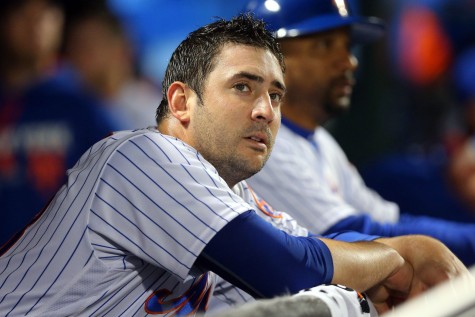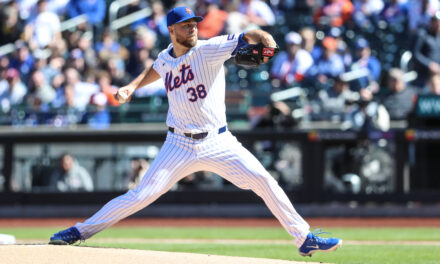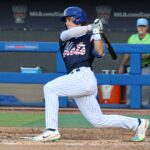
The New York Mets hitters amassed only a single hit in their 3-0 loss to the Atlanta Braves. As noted below, there is little to worry about with the Mets batting lineup but the same cannot be said for Matt Harvey.
Matt Harvey (L, 2-4) 3 R, 8 H, 4 SO, 2 BB
There were two main reasons Harvey was successful last season:
- His ability to throw a strike in any count, especially behind in the count, with any of his four pitches in his repertoire
- His ability to throw a fastball with at an average 95.9 mph
Both allow Harvey the leniency to fall behind in the count and still create outs, even strikeouts because hitters can’t predict which pitch is going to be thrown to them. Additionally, opposing hitters can’t wait for 96 mph fastballs because they are extremely difficult to hit well even when a hitter knows a fastball is coming.
Last night, Harvey threw a solid 68% of his pitches for strikes yesterday and threw a decent 66% first pitch strikes. However, Harvey struggled throwing off-speed pitches for strikes (63% strike rate) especially when behind in the count. Harvey found himself behind in two-ball counts during 11 of the 27 Braves batters faced (40% of batters faced). Both Mallex Smith’s home run and A.J. Pierzynski’s RBI double came behind in the count 2-1 and 2-0 respectively.
Harvey’s inability to throw off-speed pitches for strikes when behind in the count forced him into throwing predictable fastballs.
Last season, even when Harvey’s off-speed pitches weren’t finding the strike zone, he was able to amp his fastball velocity up to 97 or 98 mph to “blow” his fastball past opposing hitters. Last night, Harvey’s average fastball velocity registered at 93.8 mph, maxing out just above 95 mph. My friends always ask me, how can a small two miles per hour difference is fastball greatly effect a pitchers outcome?
Any professional or even collegiate hitters can tell you that after the 94 or 95 mph threshold, each mph after that is significantly harder than the previous mph. In simple terms, seeing a 96 mph is noticeably different than seeing a 95 mph fastball, seeing 97 mph fastball is noticeably different than seeing 96 mph fastball and so on and so forth. Conversely, seeing a 93 mph fastball isn’t that much different than a 92 mph fastball.
Last night was a cool, rainy evening early in the season, making it difficult to command off-speed pitches and throwing his max fastball velocity but something to pay attention to.
Stat of the Night
Based on FanGraphs team statistics from all of last night’s Major League games, the Mets had the fifth highest hard contact percentage at 45.5% coupled with by far the lowest BABIP (batting average with balls in play) at .045. Additionally, the Mets struck out only five times and had the second highest contact percentage in MLB last night at 88.9%. This proves Mets hitters had bad luck at the plate last night.
Follow Chris Zaccherio on Twitter @ziography for more Mets insight going beyond statistics.














